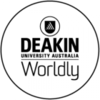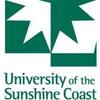What is a social network?
Social networks are structures made up of sets of people (actors), individuals and/or organisations. It is possible to explore the nature of interaction between the actors to help identify patterns, locate influential entities, and examine network dynamics.
Why should coastal managers be interested in social networks?
The coast is an important part of the Australian psyche. It is highly valued socially, economically and environmentally but it is a highly contested space. Many different and often competing interests are expressed at the coast. Coastal management therefore occurs in complex, multilayered ecological and social contexts. There are often many different players involved with diverse values, capacities, and perspectives about how to best use and manage the coast. It can be difficult to make costal decisions that suit everyone.
How can you enhance the adaptive learning of your organisation by using social network analysis?
Social Network Analysis can be used to explore how different interests are represented at the coast. Knowing the patterns of interaction between people or groups who are interested in or involved in decisions that will affect the coast can help to enhance the adaptive learning capacity of a coastal organisation. SNA can help to:
- Develop trust between coastal stakeholders
- Facilitate the diffusion of scientific information
- Identify the flows and/or blocks in a network
- Build consensus and common goals
When should I think about using Social Network Analysis?
Social Network Analysis might be a valuable research method for you, if in your current role you are:
- Trying to resolve a coastal management challenge that involves people in opposed positions
- Finding members of the broader community who might be interested in a coastal
- management decision that needs to be made by your organisation
- Planning a consultation strategy
Social Network Analysis can help you to identify how different individuals or groups might influence your immediate coastal challenge or community engagement task.
How can I get started?
First of all it is important to find out who is the in the network. Begin by making a list of people that you know are involved in the particular issue you are investigating. Think about people who may be involved in the network through both formal and informal roles (e.g. do they work for a government department, council, or community group). Include yourself in the network, if you are connected to any of the individuals/organisations. Keep a record of the role of individuals and the organisations to which they belong (this could be formal or informal organisations). Then begin ‘snowballing’. This involves making contact with people on your list and directly asking them in relation to your particular investigation a number of questions: who else they are working with or in contact with, or about other people they can identify who hold important or influential roles.
Keep a record of:
- Who is in contact with whom
- How strong is the connection between people.
- How often are people in touch with each other
Once you have a comprehensive list of people, and you think you have identified the most important and relevant people or organisations in the network and collected some information about the nature of the connections between people you can begin to analyse how this network is operating.
Mapping the network
Drawing a network map can help to identify how actors are connected to one another and what these connections are like (e.g. who is well connected?, who is not connected to the network, but should be?, how strong are the connections?).
Working with the names that you have generated from your list you can begin to create a network map.
1. On a large sheet of paper draw a circle in the centre place the name of the person or organisation who you perceive to be very important in terms of your particular investigation (they might be the most connected, most powerful, most informed).
2. Add more individuals or organisations (actors) from the list to the paper.
3. Draw lines between actors that share a connection (shade these lines to represent strength of the connection)
4. Continue adding names from the list until your network map is finished.
Of course this isn’t hard science, and there may be some gaps in your list but researchers have found a strong link between people’s perception of social networks and their actual, research based representation.
Useful reading
Borgatti, S. P., Mehra, A., Brass, D. J. & Labianca, G. 2009. ‘Network analysis in the social sciences’, Science, 323, pp.892-895. Note: This article is a useful introduction to SNA, its key concepts and applications.
Diani, M. 2003.’Networks and social movements: a research programme’. In M. Diani and D. McAdam (eds.) Social movements and networks: relational approaches to collective action. Oxford University Press, Oxford, pp.299-319. This chapter provides a useful introduction social networks. It discusses how network types influence action through social movements. The ideas in this chapter could be applied in coastal governance context.
Krackhardt, D. 1987. ‘Cognitive social structures’, Social Networks, 9, pp.109-143. This article suggests that perceptions of networks can have real consequences. For example, how we perceive a network is a useful starting point for modifying the network.
More Information
Download the pdf at the top of the page for detailed information on Analysing the Network, Types of Networks and Applying Network Analysis.










